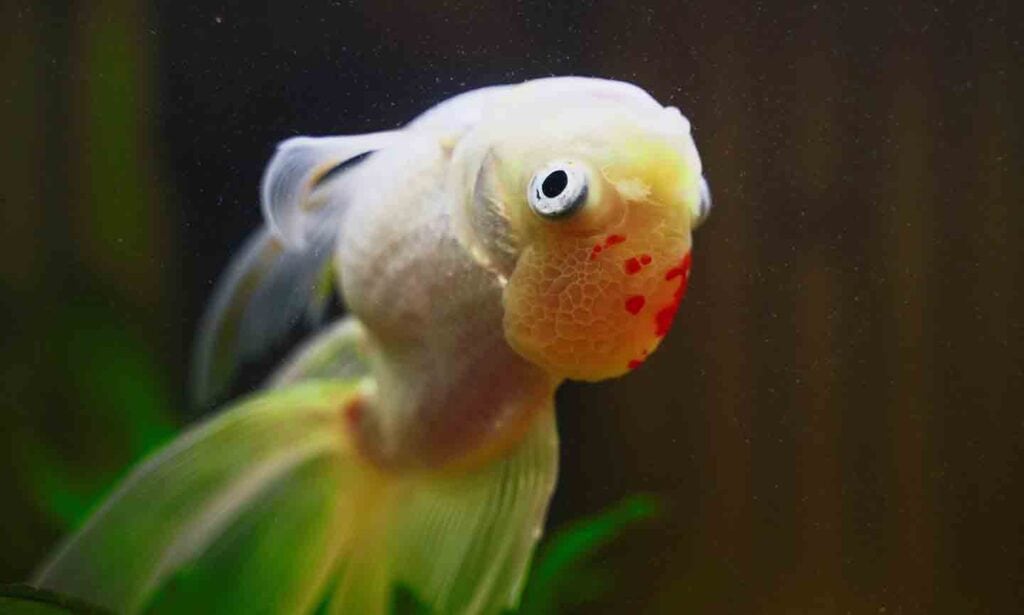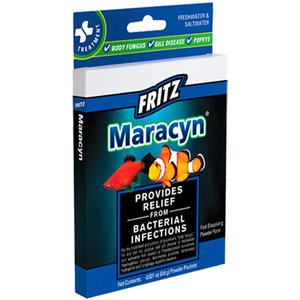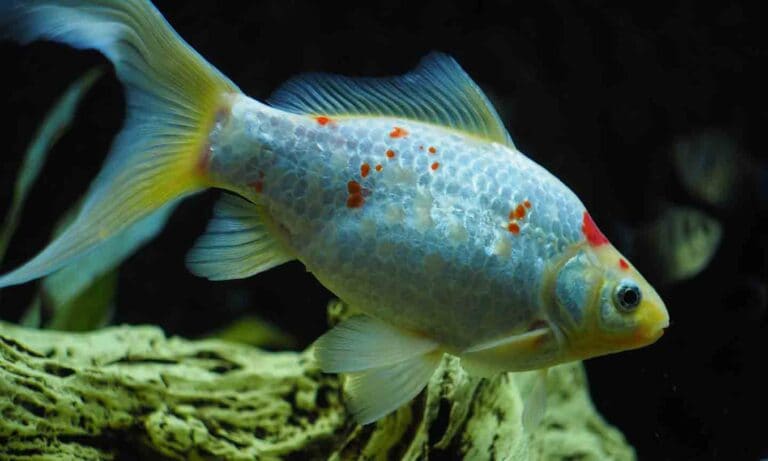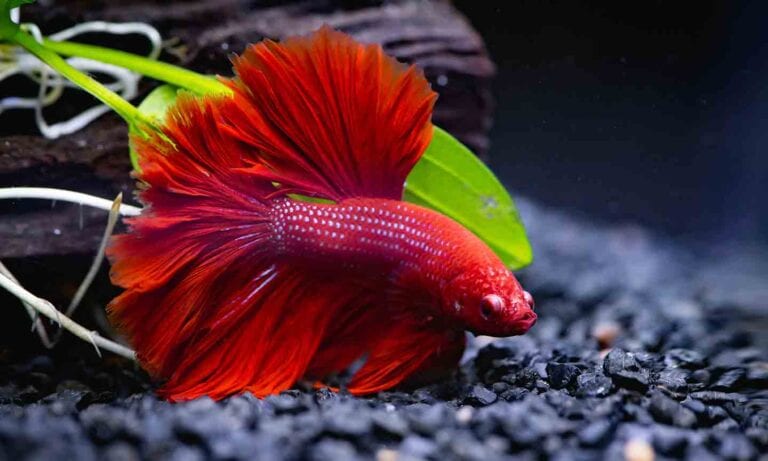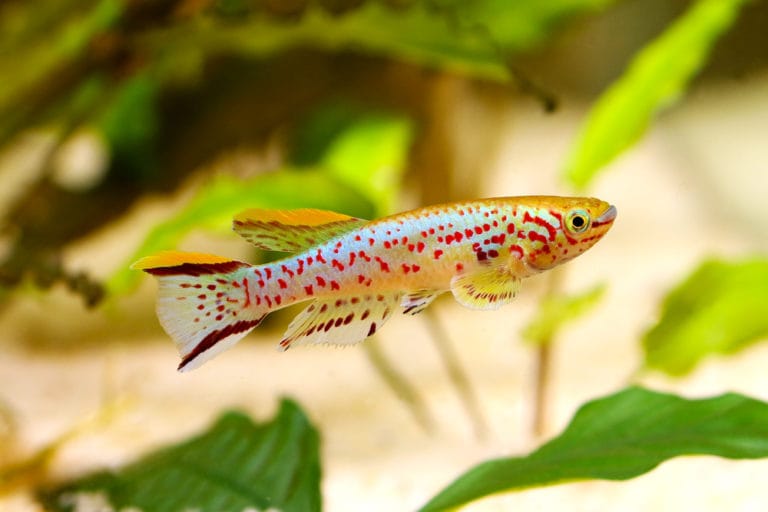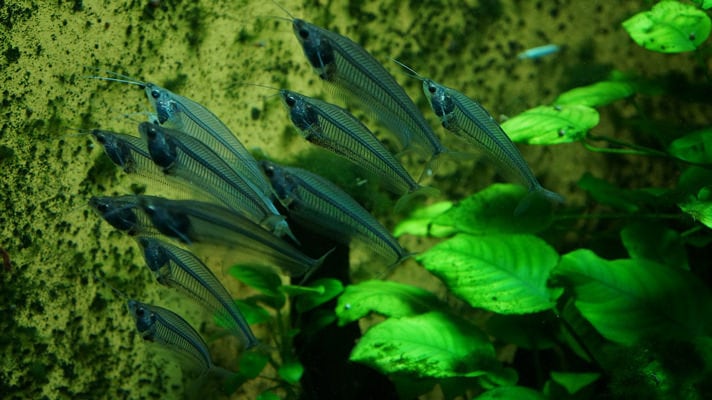Aquarium keeping is a fulfilling and rewarding hobby, but when our fish show signs of illness, it becomes an immediate source of stress for us (and for them!). It’s always important to be able to recognize signs of disease in your fish.
One common condition among aquarium fish is swim bladder disease.
If you’ve ever noticed your fish swimming upside down or swimming sideways, they may be struggling with swim bladder disease.
In This Guide
What Is Swim Bladder Disease in Fish?
To understand swim bladder (aka air bladder) disease, you must first understand the swim bladder itself. The primary function of the fish swim bladder is to maintain buoyancy, though it can also play a role in your fish’s hearing and vocalizing.
In general, fish regulate the amount of air in their swim bladder in one of two ways: by gulping air at the surface (e.g., carp, koi, catfish, goldfish) or through gas exchange via an intricate network of blood vessels (e.g., cichlids, perch-like fish). The former is categorized as physostomous, and the latter as physoclistous.
When a fish has trouble regulating their swim bladder, it’s commonly called swim bladder disease. Note that swim bladder disease is not a specific sickness but rather a syndrome; it is a sign of other underlying issues. The actual swim bladder is often not the source of the disease but is the organ impacted by the primary illness.
More accurately, fish air bladder problems can be described as a buoyancy disorder and can manifest positively (floating to the surface) or negatively (sinking to the bottom).
What Causes Swim Bladder Disease in Fish?
A wide variety of issues can cause the buoyancy problems associated with swim bladder in fish, including:
- Poor water quality
- Overeating/improper diet
- Sudden temperature swings
- Bacterial infections
- Parasites
- Other impaired organs
- Physical trauma from shipping, improper handling, and fighting with other fish
Because there are so many issues that can present as a buoyancy disorder, it can be difficult to correctly diagnose and treat the underlying cause of swim bladder disease.
What Are the Symptoms of Swim Bladder Disease?
All symptoms of swim bladder disease involve swimming problems relating to neutral buoyancy, and your sick fish can exhibit one of more of these at once.
- Distended belly: Your fish’s abdomen will appear full or bloated and the fish will struggle to maneuver normally.
- Floating on the surface: Your fish spends most of their time floating at the surface, potentially upside down in more advanced cases, and has a difficult time descending in the water column, if they can do so at all.
- Sinking to the bottom: Your fish spends most of their time lying on the bottom of the tank and struggles to swim to the surface, if they can do so at all.
- Listing, leaning, or swimming on one side: Your fish cannot stay upright, and they always seem to be tipping to one side, making it difficult or impossible to swim normally.
- Head tilted up or down: Your fish’s head is either tilted upwards or downwards, and they cannot seem to right themselves even with great effort.
Constant exposure to air or regularly resting on the substrate can cause a fish to have additional medical issues because these behaviors have a negative impact on the fish’s slime coat. Breaking down this natural barrier makes fish susceptible to a host of infections.
Struggling to swim normally is also extremely stressful and energy intensive, further contributing to a decline in fish health.
How Do Vets Diagnose Swim Bladder Disease in Fish?
If your fish’s body is bloated and they’re having trouble regulating their buoyancy in any of the ways mentioned in the section above, there is a good chance there is something wrong with their swim bladder, and you should bring your fish to your veterinarian.
To diagnose a fish with swim bladder, veterinarians will examine them via X-ray, which will show the swim bladder outline because it is filled with air. It helps your veterinarian determine if there is a tumor compressing the swim bladder, if there is fluid there, if the swim bladder is ruptured, if it is displaced from its normal location or if it over inflated.
How Do Vets Treat Swim Bladder Disease in Fish?
Swim bladder disease treatment depends on the cause. Your veterinarian will determine the best treatment for your fish.
1Consider Your Water Quality
The most overlooked contributor to swim bladder disorders is poor water quality. If your fish is having a buoyancy problem, the first thing you should do is measure some water quality parameters, including:
- Ammonia level
- Nitrite level
- Nitrate level
- pH of the water
All common aquarium test strips will be able to measure these basic water quality parameters.
Any level of ammonia or nitrite
Substantial water changes (25-50% of the tank) until levels are no longer detectable
High nitrate levels
Substantial water changes (25-50% of the tank) until the level returns to an acceptable rate for your fish
pH too low or too high
Use an aquarium water treatment designed to raise or lower your tank’s pH
The recommended range for all of the above will vary depending on the type of fish you have, so consult a vet or other fish expert about the ideal levels for your tank.
2Consider Your Water Temperature
Temperature stress can also lead to swim bladder disease. A water temperature that shifts rapidly (such as from a malfunctioning heater or chiller) can absolutely cause swim bladder disorders, as can temperatures that are chronically too high or too low.
Talk to your vet or fish expert to find out what the ideal temperature is for your fish species, and use a thermometer to monitor the temperature of your tank.
3Consider Your Fish’s Diet
Improper diet is another major factor that causes swim bladder disorders. Feeding the wrong foods or too much food can lead to gut distension and digestive tract blockages.
Ensure that you’re feeding your fish the correct food for their species. Many types of fish food list their appropriate fish types on the packaging and/or in the product description.
Understanding the dietary needs of your fish is crucial to their well-being and a key to successful fishkeeping.
4Try an Antibiotic
Since secondary bacterial infections are one of the most common causes of swim bladder disorders, pharmaceutical intervention may be needed to help your fish.
If you take the actions mentioned above and your fish’s condition does not improve, it may be wise to try a broad-spectrum antibiotic, such as Maracyn from Fritz.
Swim Bladder Disease Prognosis
As with many diseases, the sooner you catch this the better. If remedied soon after the onset of buoyancy issues, the fish has a good chance of returning to normal.
However, if left untreated for an extended period, the likelihood of recovery and survival is much lower.
How Can I Prevent Swim Bladder Disease in My Fish?
The best way to prevent swim bladder problems in aquarium fish is by maintaining good water quality. Feeding your fish an appropriate diet is also very important to prevent health issues.
Here are some ways to prevent your fish from getting swim bladder disease:
- Ensuring your tank is the correct size
- Providing suitable tank mates
- Keeping the right temperature for your fish
FAQs About Swim Bladder in Fish
Q:Why is my fish swimming upside down?
A:
Sometimes the swim bladder becomes so over-inflated that it is impossible for the fish to counteract the positive buoyancy of the bladder with their swimming movements, resulting in your fish swimming upside down like they’re attached to a balloon.
Q:Why is my fish swimming sideways?
A:
Your fish could be swimming sideways from a swim bladder issue, illness, neurologic issue, poor water quality, or even injury. It is important to have them evaluated by a fish veterinarian right away to determine the underlying cause.
Keeping Your Fish Healthy
Share:
